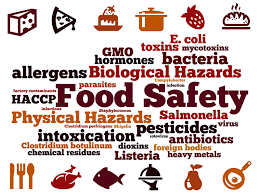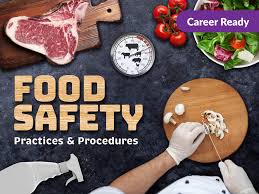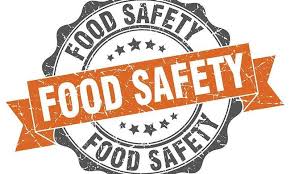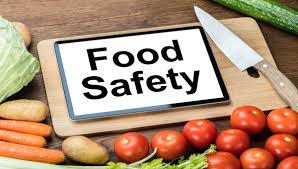Food Safety: Ensuring Health and Well-Being 
Food safety is a crucial aspect of public health that ensures the food we consume is safe from contaminants, pathogens, and harmful substances. The significance of food safety cannot be overstated, as it directly impacts the health of individuals and communities worldwide. Understanding the principles of food safety, the risks involved, and the measures to ensure safe food handling and consumption is essential for everyone, from producers to consumers.
Understanding Food Safety
Food safety involves the processes and practices that prevent foodborne illnesses and contamination throughout the food supply chain, from production and processing to distribution and consumption. It encompasses several key areas:
- Foodborne Illnesses: These illnesses are caused by consuming contaminated food or beverages. They can result from bacteria, viruses, parasites, or chemical substances. Common foodborne pathogens include Salmonella, E. coli, and Listeria.
- Food Contamination: Contamination can occur at any stage of the food supply chain and can be categorized as:
- Biological Contamination: Caused by microorganisms such as bacteria, viruses, and parasites.
- Chemical Contamination: Involves harmful substances like pesticides, heavy metals, and food additives.
- Physical Contamination: Involves foreign objects (e.g., glass, metal) inadvertently introduced into food products.
- Regulatory Standards: Various organizations, such as the U.S. Food and Drug Administration (FDA) and the World Health Organization (WHO), set guidelines and regulations to ensure food safety. These regulations cover everything from food labeling to safe handling practices.
The Importance of Food Safety
The significance of food safety extends beyond individual health, impacting public health systems, economies, and food security:
- Public Health: Foodborne illnesses can lead to severe health complications, hospitalization, and even death. According to the WHO, approximately 600 million people—almost 1 in 10—fall ill after eating contaminated food, leading to 420,000 deaths annually.
- Economic Impact: Foodborne illnesses can strain healthcare systems and lead to lost productivity. The Centers for Disease Control and Prevention (CDC) estimates that foodborne diseases cost the U.S. economy over $15.6 billion each year in medical expenses and lost productivity.
- Consumer Trust: Food safety is critical for maintaining consumer confidence in food products. When consumers perceive that the food supply is unsafe, they may choose to avoid certain products or sources, impacting sales and market stability.
- Global Trade: Food safety standards are essential for international trade. Countries must comply with safety regulations to export food products, making food safety crucial for economic growth and globalization.
Key Principles of Food Safety
To ensure food safety, several fundamental principles must be followed throughout the food supply chain:
- Clean: Maintaining cleanliness in food handling is crucial. This includes washing hands, surfaces, and produce to prevent cross-contamination. Proper hygiene practices significantly reduce the risk of foodborne pathogens.
- Separate: Preventing cross-contamination between raw and cooked foods is essential. Using separate cutting boards, utensils, and storage containers for raw meats and ready-to-eat foods can minimize the risk of transferring harmful bacteria.
- Cook: Cooking food to the appropriate temperatures is vital for killing harmful pathogens. Different foods have specific safe cooking temperatures (e.g., poultry should reach an internal temperature of 165°F/75°C).
- Chill: Proper refrigeration slows the growth of bacteria. Foods should be stored at or below 40°F (4°C), and leftovers should be promptly refrigerated. The “two-hour rule” states that perishable foods should not be left out at room temperature for more than two hours.
- Safe Sourcing: Ensuring that food is sourced from reputable suppliers who adhere to safety standards is essential. Consumers should be aware of where their food comes from and choose products that meet safety regulations.
Food Safety Risks and Challenges
Despite the established principles of food safety, several challenges and risks persist:
- Emerging Pathogens: New and antibiotic-resistant pathogens continue to emerge, posing significant risks to food safety. The evolving nature of pathogens requires ongoing research and adaptation of safety practices.
- Globalization of the Food Supply: The global food supply chain introduces complexities in monitoring food safety. Products may be sourced from various countries, complicating the ability to enforce safety standards consistently.

- Climate Change: Changes in climate can affect food production and safety. Increased temperatures can lead to the growth of harmful bacteria, while extreme weather events can disrupt food supply chains, impacting safety.
- Food Fraud: The intentional mislabeling or adulteration of food products poses a significant risk. Food fraud can undermine safety efforts and lead to health risks for consumers.
- Consumer Behavior: Public understanding of food safety practices is often inadequate. Many consumers lack knowledge about safe food handling, cooking temperatures, and food storage, leading to increased risks of foodborne illness.
Food Safety Regulations and Standards
To combat food safety risks, various regulations and standards are in place globally:
- Food Safety Modernization Act (FSMA): In the United States, the FSMA was enacted to shift the focus from responding to foodborne illnesses to preventing them. It empowers the FDA to regulate food safety practices and enforce standards across the food supply chain.
- HACCP: Hazard Analysis and Critical Control Points (HACCP) is a systematic approach to food safety that identifies potential hazards and implements controls at critical points in food production. It is widely used in food processing and manufacturing.
- Codex Alimentarius: Developed by the WHO and the FAO, the Codex Alimentarius is a collection of internationally recognized standards and guidelines to ensure food safety and quality. It provides a framework for countries to develop their food safety regulations.
- Local Health Departments: Local health departments play a crucial role in monitoring food safety within communities. They conduct inspections, enforce regulations, and educate the public on safe food practices.
Best Practices for Consumers
Consumers can take proactive steps to ensure food safety at home:
- Personal Hygiene: Always wash hands with soap and water before handling food, after using the bathroom, and after touching pets. This simple step can significantly reduce the risk of contamination.
- Proper Food Storage: Store food at the correct temperatures and keep refrigerators organized. Ensure that raw meats are stored on the bottom shelf to prevent drips onto other foods.

- Cooking Temperatures: Use a food thermometer to check the internal temperatures of cooked foods. Familiarize yourself with safe cooking temperatures for various foods.
- Thawing Food Safely: Never thaw food at room temperature. Instead, thaw it in the refrigerator, in cold water, or in the microwave.
- Be Mindful of Expiration Dates: Pay attention to “use by” and “sell by” dates. Consuming expired foods can increase the risk of foodborne illness.
- Educate Yourself: Stay informed about food safety practices and new developments in food safety guidelines. Resources from organizations like the CDC and the FDA can provide valuable information.
Community and Global Efforts
Addressing food safety is a collective responsibility that requires collaboration among various stakeholders:
- Education and Training: Programs aimed at educating food handlers, from restaurant staff to home cooks, are essential. Training in safe food handling practices can reduce the incidence of foodborne illnesses.
- Research and Innovation: Ongoing research into food safety practices, pathogen detection, and food preservation methods is vital for adapting to emerging challenges. Innovations in food technology can enhance safety measures throughout the supply chain.
- Public Policy Advocacy: Advocacy for stronger food safety regulations and enforcement can lead to improved safety standards. Engaging with policymakers to prioritize food safety can drive systemic change.
- Community Programs: Local initiatives, such as community gardens and farmer’s markets, can promote access to fresh, safe food while educating the public about food safety practices.
Conclusion
Food safety is an integral component of public health that affects everyone, from producers to consumers. Ensuring that food is safe to eat is a shared responsibility that requires vigilance, education, and adherence to established safety principles. By understanding the importance of food safety, recognizing the risks involved, and taking proactive measures, we can work together to create a safer food environment for all. Promoting food safety not only protects individual health but also contributes to the well-being of communities and society as a whole. As we face emerging challenges in food safety, a collective commitment to safe practices will be essential for ensuring a healthy future.

